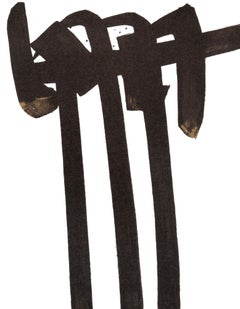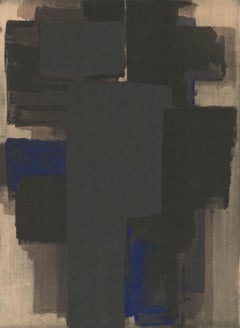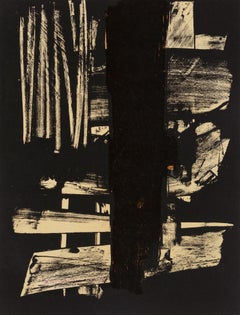Pierre Soulages On Sale
1970s Modern Abstract Prints
Lithograph
1950s Modern Abstract Prints
Lithograph
1950s Modern Abstract Prints
Lithograph
Recent Sales
1970s Abstract Abstract Prints
Lithograph
1960s Modern Abstract Prints
Lithograph
People Also Browsed
21st Century and Contemporary American Mid-Century Modern Benches
Walnut, Oak
Mid-20th Century French Mid-Century Modern Wall Lights and Sconces
Metal, Brass
Vintage 1950s Italian Mid-Century Modern Console Tables
Beech
Vintage 1970s European Mid-Century Modern Prints
Paper
1950s Abstract Abstract Prints
Lithograph
1960s Prints and Multiples
Paper, Lithograph
2010s Pop Art Landscape Prints
Watercolor, Permanent Marker, Screen, Mixed Media
1950s Abstract Abstract Prints
Lithograph, Stencil
Mid-20th Century Italian Art Deco Dry Bars
Brass
1960s Abstract Abstract Prints
Etching, Aquatint
1950s Op Art Abstract Prints
Lithograph
1970s Surrealist More Prints
Lithograph
1960s Abstract Geometric Abstract Prints
Screen
Mid-20th Century American Mid-Century Modern Stools
Wood
Vintage 1950s Italian Mid-Century Modern Side Tables
Wood
21st Century and Contemporary American Console Tables
Parchment Paper, Mahogany
Pierre Soulages for sale on 1stDibs
Pierre Soulages was born on December 24, 1919, in Rodez, France. Attracted by Romanesque art and prehistory at a young age, he began to paint. At 18, he was admitted to the École Nationale Supérieure des Beaux-Arts in Paris, but, convinced of the mediocrity of the education there, refused to enter. In 1946, Soulages began to paint fulltime. In 1948, he took part in exhibitions in Paris and elsewhere in Europe, including “Französische abstrakte malerei” (French abstract painting) in several German museums. He was the youngest of this group. In 1949, Soulages received a solo exhibition at the Lydia Conti gallery in Paris and group exhibitions in New York, London, Sao Paulo and Copenhagen. From 1949 to 1952, he created his first etchings. His group exhibitions in New York began traveling to other American museums, including “Advancing French Art” (1951), “Younger European Artists” Guggenheim Museum (1953), and “The New Decade,” Museum of Modern Art (1955). He also began to exhibit at the Kootz Gallery, New York, and the Galerie de France, Paris. In the early 1950s, his works were acquired by The Phillips Collection, Washington, D.C.; the Guggenheim Museum and the Museum of Modern Art, New York; the Tate Gallery, London, the National Museum of Modern Art, Paris; and the Museu de Arte Moderna, Rio de Janeiro, among others. In 1960, the Kestner Gesellschaft in Hanover, Germany, held Soulages’ first retrospective. Several retrospectives followed, including the Museum of Fine Arts in Houston (1966). In 1979 Soulages exhibited his first single-pigment paintings based on the reflection of light by the surface states of black at the Musée National d’Art Moderne—Centre Georges Pompidou. The pictorial light arising from the difference between two darknesses in the paintings carried a great power of emotion and possibilities for development. It was later called "black-light" and "outrenoir." Soulages has since created other works where rhythm, space and light are born from the violent contact of black and white on the canvas surface . In 2001, Soulages was the first living artist invited to exhibit at the Hermitage Museum in Saint Petersburg, then at the Tretyakov Gallery in Moscow. In October 2009, the Centre Pompidou presented the largest retrospective since the beginning of the 1980s devoted to a living artist, occupying more than 2,000 square meters of space. It ranked as the fourth most attended exhibition in the history of the Centre Pompidou. That same year, the Louvre Museum exhibited a painting by Soulages in the Salon Carré in the Denon wing. In 2019, in homage to the artist for his 100th birthday, numerous events were organized in France and abroad. The Soulages exhibition at the Louvre, designed as a mini-retrospective, presented three new paintings and was accompanied by a hanging at the Musée Natinal d’Art Moderne—Centre Georges Pompidou. Today, Soulages is represented in more than 110 museums with more than 230 paintings. He is a favorite painter among his peers, French artists.
A Close Look at Modern Art
The first decades of the 20th century were a period of artistic upheaval, with modern art movements including Cubism, Surrealism, Futurism and Dadaism questioning centuries of traditional views of what art should be. Using abstraction, experimental forms and interdisciplinary techniques, painters, sculptors, photographers, printmakers and performance artists all pushed the boundaries of creative expression.
Major exhibitions, like the 1913 Armory Show in New York City — also known as the “International Exhibition of Modern Art,” in which works like the radically angular Nude Descending a Staircase by Marcel Duchamp caused a sensation — challenged the perspective of viewers and critics and heralded the arrival of modern art in the United States. But the movement’s revolutionary spirit took shape in the 19th century.
The Industrial Revolution, which ushered in new technology and cultural conditions across the world, transformed art from something mostly commissioned by the wealthy or the church to work that responded to personal experiences. The Impressionist style emerged in 1860s France with artists like Claude Monet, Paul Cézanne and Edgar Degas quickly painting works that captured moments of light and urban life. Around the same time in England, the Pre-Raphaelites, like Edward Burne-Jones and Dante Gabriel Rossetti, borrowed from late medieval and early Renaissance art to imbue their art with symbolism and modern ideas of beauty.
Emerging from this disruption of the artistic status quo, modern art went further in rejecting conventions and embracing innovation. The bold legacy of leading modern artists Georges Braque, Pablo Picasso, Frida Kahlo, Salvador Dalí, Henri Matisse, Joan Miró, Marc Chagall, Piet Mondrian and many others continues to inform visual culture today.
Find a collection of modern paintings, sculptures, prints and other fine art on 1stDibs.
Finding the Right Abstract-prints-works-on-paper for You
Explore a vast range of abstract prints on 1stDibs to find a piece to enhance your existing collection or transform a space.
Unlike figurative paintings and other figurative art, which focuses on realism and representational perspectives, abstract art concentrates on visual interpretation. An artist may use a single color or simple geometric forms to create a world of depth. Printmaking has a rich history of abstraction. Through materials like stone, metal, wood and wax, an image can be transferred from one surface to another.
During the 19th century, iconic artists, including Edvard Munch, Paul Cézanne, Georgiana Houghton and others, began exploring works based on shapes and colors. This was a departure from the academic conventions of European painting and would influence the rise of 20th-century abstraction and its pioneers, like Pablo Picasso and Piet Mondrian.
Some leaders of European abstraction, including Franz Kline, were influenced by the gestural shapes of East Asian calligraphy. Calligraphy interprets poetry, songs, symbols or other means of storytelling into art, from works on paper in Japan to elements of Islamic architecture.
Bold, daring and expressive, abstract art is constantly evolving and dazzling viewers. And entire genres have blossomed from it, such as Color Field painting and Minimalism.
The collection of abstract art prints on 1stDibs includes etchings, lithographs, screen-prints and other works, and you can find prints by artists such as Joan Miró, Alexander Calder and more.


